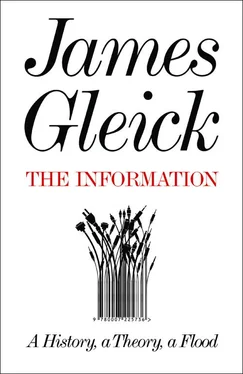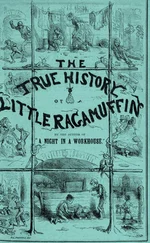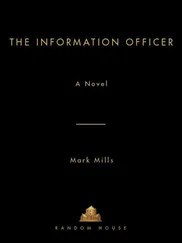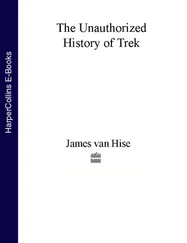A formal solution to a game—the very idea of such a thing was original. The desire to create a language of symbols, in which the solution could be encoded—this way of thinking was Babbage’s, as she well knew.
She pondered her growing powers of mind. They were not strictly mathematical, as she saw it. She saw mathematics as merely a part of a greater imaginative world. Mathematical transformations reminded her “of certain sprites & fairies one reads of, who are at one’s elbows in one shape now, & the next minute in a form most dissimilar; and uncommonly deceptive, troublesome & tantalizing are the mathematical sprites & fairies sometimes; like the types I have found for them in the world of Fiction.” Imagination —the cherished quality. She mused on it; it was her heritage from her never-present father.
We talk much of Imagination. We talk of the Imagination of Poets, the Imagination of Artists &c; I am inclined to think that in general we don’t know very exactly what we are talking about. . . .
It is that which penetrates into the unseen worlds around us, the worlds of Science. It is that which feels & discovers what is , the real which we see not, which exists not for our senses . Those who have learned to walk on the threshold of the unknown worlds . . . may then with the fair white wings of Imagination hope to soar further into the unexplored amidst which we live.
She began to believe she had a divine mission to fulfill. She used that word, mission . “I have on my mind most strongly the impression that Heaven has allotted me some peculiar intellectual-moral mission to perform.” She had powers. She confided in her mother:
I believe myself to possess a most singular combination of qualities exactly fitted to make me pre-eminently a discoverer of the hidden realities of nature. . . . The belief has been forced upon me, & most slow have I been to admit it even.
She listed her qualities:
Firstly: Owing to some peculiarity in my nervous system, I have perceptions of some things, which no one else has; or at least very few, if any. . . . Some might say an intuitive perception of hidden things;—that is of things hidden from eyes, ears & the ordinary senses. . . .
Secondly;—my immense reasoning faculties;
Thirdly; . . . the power not only of throwing my whole energy & existence into whatever I choose, but also bring to bear on any one subject or idea, a vast apparatus from all sorts of apparently irrelevant & extraneous sources. I can throw rays from every quarter of the universe into one vast focus.
She admitted that this sounded mad but insisted she was being logical and cool. She knew her life’s course now, she told her mother. “ What a mountain I have to climb! It is enough to frighten anyone who had not all that most insatiable & restless energy, which from my babyhood has been the plague of your life & my own. However it has found food I believe at last.” She had found it in the Analytical Engine.
——
Babbage meanwhile, restless and omnivorous, was diverting his energies to another burgeoning technology, steam’s most powerful expression, the railroad. The newly formed Great Western Railway was laying down track and preparing trial runs of locomotive engines from Bristol to London under the supervision of Isambard Kingdom Brunel, the brilliant engineer, then just twenty-seven years old. Brunel asked Babbage for help, and Babbage decided to begin with an information-gathering program— characteristically ingenious and grandiose. He outfitted an entire railway carriage. On a specially built, independently suspended table, rollers unwound sheets of paper a thousand feet long, while pens drew lines to “express” (as Babbage put it) measurements of the vibrations and forces felt by the carriage in every direction. A chronometer marked the passage of time in half seconds. He covered two miles of paper this way.
As he traversed the rails, he realized that a peculiar danger of steam locomotion lay in its outracing every previous means of communication. Trains lost track of one another. Until the most regular and disciplined scheduling was imposed, hazard ran with every movement. One Sunday Babbage and Brunel, operating in different engines, barely avoided smashing into each other. Other people, too, worried about this new gap between the speeds of travel and messaging. An important London banker told Babbage he disapproved: “It will enable our clerks to plunder us, and then be off to Liverpool on their way to America at the rate of twenty miles an hour.” Babbage could only express the hope that science might yet find a remedy for the problem it had created. (“Possibly we might send lightning to outstrip the culprit.”)
As for his own engine—the one that would travel nowhere—he had found a fine new metaphor. It would be, he said, “a locomotive that lays down its own railway.”
Bitter as he was about England’s waning interest in his visionary plans, Babbage found admirers on the continent, particular in Italy—“the country of Archimedes and Galileo,” as he put it to his new friends. In the summer of 1840 he gathered up his sheaves of drawings and journeyed by way of Paris and Lyon, where he watched the great Jacquard loom at Manufacture d’Étoffes pour Ameublements et Ornements d’Église, to Turin, the capital of Sardinia, for an assembly of mathematicians and engineers. There he made his first (and last) public presentation of the Analytical Engine. “The discovery of the Analytical Engine is so much in advance of my own country, and I fear even of the age,” he said. He met the Sardinian king, Charles Albert, and, more significantly, an ambitious young mathematician named Luigi Menabrea. Later Menabrea was to become a general, a diplomat, and the prime minister of Italy; now he prepared a scientific report, “ Notions sur la machine analytique ,” to introduce Babbage’s plan to a broader community of European philosophers.
As soon as this reached Ada Lovelace, she began translating it into English, correcting errors on the basis of her own knowledge. She did that on her own, without telling either Menabrea or Babbage.
When she finally did show Babbage her draft, in 1843, he responded enthusiastically, urging her to write on her own behalf, and their extraordinary collaboration began in earnest. They sent letters by messenger back and forth across London at a ferocious pace—“My Dear Babbage” and “My Dear Lady Lovelace”—and met whenever they could at her home in St. James’s Square. The pace was almost frantic. Though he was the eminence, fifty-one years old to her twenty-seven, she took charge, mixing stern command with banter. “I want you to answer me the following question by return of post”; “Be kind enough to write this out properly for me”; “You were a little harum-scarum and inaccurate”; “I wish you were as accurate and as much to be relied on as myself.” She proposed to sign her work with her initials—nothing so forward as her name—not to “ proclaim who has written it,” merely to “ individualize and identify it with other productions of the said A.A.L.”
Her exposition took the form of notes lettered A through G, extending to nearly three times the length of Menabrea’s essay. They offered a vision of the future more general and more prescient than any expressed by Babbage himself. How general? The engine did not just calculate; it performed operations , she said, defining an operation as “any process which alters the mutual relation of two or more things,” and declaring: “This is the most general definition, and would include all subjects in the universe.” The science of operations, as she conceived it,
Читать дальше











